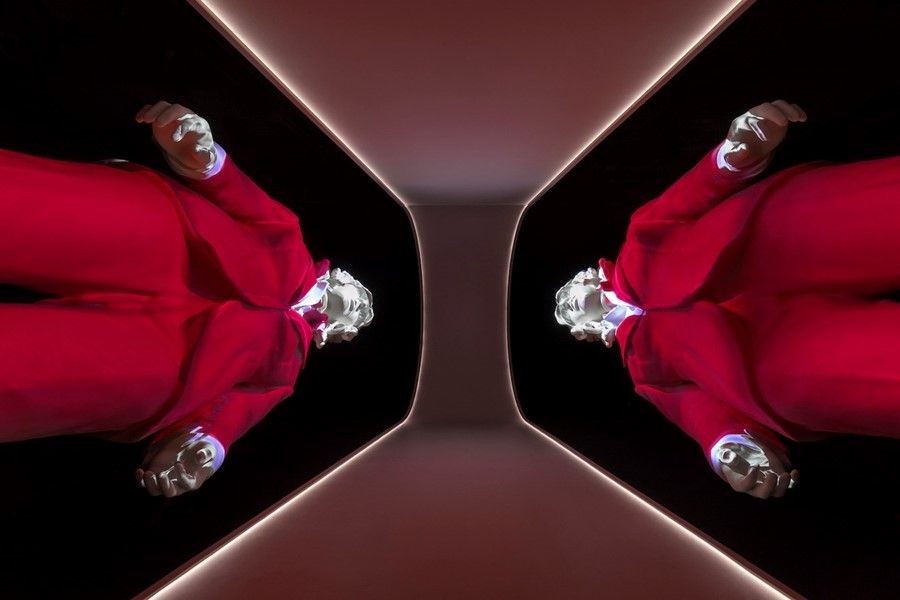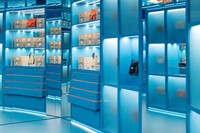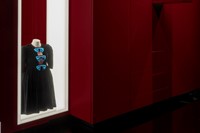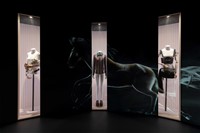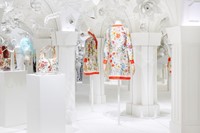Gucci’s slick new exhibition roams its expansive archive and many iterations, from the label’s beginnings as a luggage maker, to its position as a titan in fashion and luxury
“When you say retrospective, you think about the past,” curator Maria Luisa Frisa tells Alexander Fury in a panel discussion for Gucci Cosmos, with Gucci’s newly inaugurated creative director Sabato De Sarno listening intently in the front row. “Whereas this is about continuing history.” The enormous, immersive exhibition has travelled from Shanghai to London, in the process collecting with it influence and codes that inextricably tie the forward-thinking Italian heritage brand, founded some 102 years ago, with the British capital. “We have Harry Styles’ look for Coachella, a stage look worn by Elton John, Tom Ford’s velvet suit worn by Kate Moss. There are many connections in this exhibition with the life of this city,” says Frisa.
Situated at 180 Studios inside 180 Strand, the exhibition fittingly opens – as much mythology does – with an egg, made from two mirror-image reproductions of Florence’s 15th-century Duomo, attached to the facade of the brutalist building. “We wanted to put this egg on the street,” explains British artist Es Devlin, who engineered the exhibition's concept and design, “and shout it across to the Savoy Hotel.” A mere 700 yards down the road, it was at the Savoy Hotel where a young Guccio Gucci, founder of the house, began working in 1897 as a luggage porter and liftboy. In this electronic lift – the first of its kind in London – on the slow seven-minute journeys up and down the hotel, a teenage Guccio saw up close the lifestyles of international elites spending the night at the opulent hotel, and the luggage they carried with them. A recreation of this burgundy-red lift and the Savoy Lobby provide access to the main exhibition spaces, where visitors ascend from the street into the beating heart of the storied house of Gucci.
Like the elastic codes of the house, adapted through the years with each iconic creative director at the helm, nothing appears static in the show space. Each of the ten rooms is a ‘world’ that draws together treasures – many previously unseen – pulled from Gucci’s archives, which roam the many facets of the house and its unwavering principles. “Gucci’s archives are fantastic: a place for conservation and imagination,” says Frisa, who describes how each creative director, from the pioneering spirits of Guccio’s sons Aldo and Rodolfo, to more recent creative directors Tom Ford, Frida Gianni, Alessandro Michele and now Sabato De Sarno, have referenced previous works to build upon new collections. “An archive is like a compost. New materials are laid to create a new energy.”
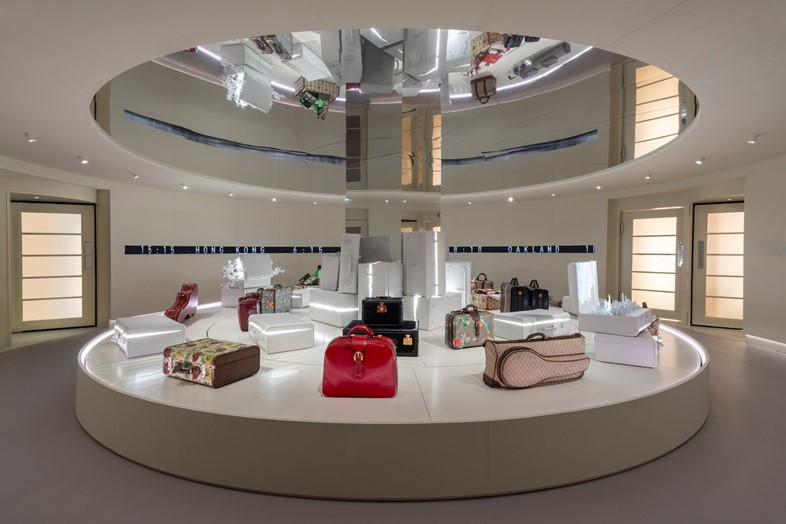
A room named Portals consists of three, all-white, circular installation spaces linked by revolving doors (a nod to the hotel’s original entrance), containing conveyor belts carrying luggage designs from across the decades; from one of the earliest signature suitcases designed by Guccio Gucci in the late 1920s, through to Alessandro Michele’s Disney-printed luggage from 2020, emblematic of the designer’s savvy blending of luxury and pop culture.
A further room, Zoetrope, explores Gucci’s long-drawn inspiration from the equestrian world, featuring immersive video footage and soundscapes of galloping horses projected against the room’s circular walls which feature glass containers showing the label’s horse riding-inspired pieces through the years. The house began as a saddlery selling leather goods to horse riders in the early 1920s, with the equestrian influence remaining key to the brand in their successful expansion into luggage, accessories and eventually fashion – notably, the horsebit attachment found itself peppered throughout collections, and adorn the looks standing on mannequins at the periphery of the Zoetrope room.
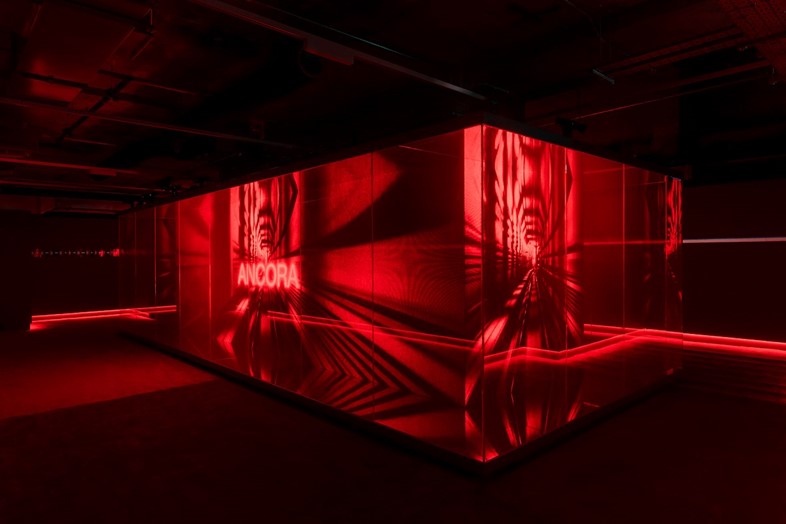
Gucci Ancora – a new room that wasn’t yet made in the Shanghai iteration – is directly inspired by the newly inaugurated creative director Sabato De Sarno’s debut collection, which wiped the slate clean for the house less than a month ago when he took the baton from Alessandro Michele. Curated from conversations between Devlin and De Sarno, the designer’s love for poetry emerges through words and phrases on the walls, lined on semi-transparent cards which can be moved to create visitors’ own compositions. At the room’s heart, the house’s new signature Rosso Ancoro shade of red beams from a chamber projected with a series of memories, phrases, and other fragments in both Italian and English, which are personal to the designer. The spectacle offers a glimpse into the future of the house, which so boldly cherishes the codes of its history – and with an enviable heritage and storied archive, how could it not? “The history [of Gucci] has never been interrupted, these objects just keep living in different ways,” says Frisa.
Gucci Cosmos is open at 180 Studios, 180 The Strand, in London, until 31 December.
